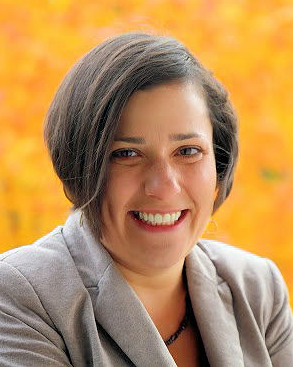Improving Community College Success
May 11, 2011

Sara Goldrick-Rab
Many students who enter community colleges do not persist for longer than a semester, complete a program, or attain a credential. To understand why, UW-Madison Education Professor Sara Goldrick-Rab examined academic research and policy research and determined that community college students face challenges at three levels:
- Students’ macro-level opportunity structure,
- College’s institutional practices, and
- The social, economic, and academic attributes students bring to college.
Factors operating at each level affect student success at the initial transition to college, during the experience of remedial education, and throughout students’ persistence through credit-bearing coursework.
Goldrick-Rab says improving student success in public 2-year community colleges will require reforms directed at all these levels and cannot be achieved with either student- or institution-focused incentives alone.
Students’ Goals and Preparation
Ninety percent of high school students say they expect to attend college, even if their career choice doesn’t require it. Compared with 12th graders in the 1970s, 12th graders in 2000 were twice as likely to anticipate earning a bachelor’s degree. Rates of long-term expectations for earning bachelor’s degrees are similarly high among entering community college students, with 70% expecting to earn a bachelor’s degree or higher.
Fully 58% of African American undergraduates and 66% of Hispanic undergraduates are enrolled in community colleges.
Relative to other undergraduates, students attending the nation’s 2-year public colleges come from a wide range of family backgrounds. For example:
- 40% of undergraduates enrolled at community colleges in 2008 were non-White, compared with 33% at 4-year public colleges;
- 38% of community college students came from families where neither parent was educated beyond high school, compared with 25% at 4-year public colleges, and
- 56% were women, compared with 53% at 4-year public colleges.
Prior academic success is not a prerequisite for admission to community colleges. The practical result is that 61% of these students must take at least one non-credit remedial course. Twenty-five percent take two or more non-credit remedial courses. Community college instructors must take on the difficult but necessary task of meeting students where they are, and helping to move them to the next academic level.
Today it is harder than ever for the poorest adults to afford community college, and to find support if they do enroll.
Many community college students get stuck early in their trajectories. Student progress through community college is generally slow. After 3 years, only 16% of first-time community college students who began college in 2003 had attained any kind of credential. Another 40% were still enrolled.
When students are given 6 years, completion rates improve a little. For example, 36% of students entering community colleges in 1995 had attained a credential by 2001. Another 17.5% were still enrolled. Goldrick-Rab says this indicates that completion rates need to account for the pace of progress toward completion. At the same time, students’ noncompletion rate (no degree, not enrolled) hovers very close to 50%--even when allowed more time.
But Goldrick-Rab advocates moving beyond the excuse that “community colleges serve more students from low socioeconomic backgrounds who are less likely to complete college.” Instead, she promotes discussing the underlying reasons why such a relationship exists and increasing the potential for action on those underlying inequalities.
Challenges and Opportunities
Because most campuses serve a primarily local population, competition among colleges is limited. Students usually lack information about the relative quality of their local college.
Among the mix of federal funds and programs dedicated to the community college sector, very few aim to improve institutional performance.
Given limited resources available for instructional costs, community colleges rely heavily on part-time adjunct lecturers who often teach multiple courses at multiple colleges and receive low wages and no benefits.
Despite widespread interest in using data to inform decision making, it’s difficult to integrate findings from institutional research into daily practice. Many community colleges lack sufficient numbers of trained researchers to use student-level data and organize it for instructional planning.
The quantity and quality of college financing information that families receive differs by social class. Why is it that economically advantaged students learn about college and how to pay for it from a variety of sources, whereas poor students often have to rely on their high school counselors?
Continuous, full-time enrollment is the optimal scenario for degree completion. However, that’s impossible for many community college students, who need to work part time or even full time. Only 31% of community college students enroll full time, and 26% enroll less than half time.
Discussion and Conclusions
Educators often attribute poor completion rates to the numerous ‘deficiencies’ students bring to community college. But Goldrick-Rab’s says it’s important to consider the policies affecting the capacity of community colleges to serve students.
Which policies and practices represent the most promising areas for reform? Much of the best evidence on potential reform is new, and it is scarce. Understanding what works, and why, requires improved data quality. But relatively few national longitudinal surveys include sizeable samples of 2-year college students. Only a handful of state data systems allow researchers to track students into higher education and among 2- and 4-year colleges.
Goldrick-Rab says policymakers and educators need a much more rigorous research agenda, focused on community college students, to inform and evaluate future actions. Goldrick-Rab says the best research on community colleges will be interdisciplinary and it will use quantitative and qualitative methods.
Measurement of student success should account for the structural and institutional constraints that colleges face. Institutional practices deserving more careful analysis include learning communities, first-year support service programs, and adult literacy programs.
“We still know far too little about what works,” she says, “but the evidence indicates a need for a multifaceted approach; one that’s flexible enough to accommodate the variety of student needs, and that’s ambitious enough to create meaningful change.”
Adapted from the article, “Challenges and Opportunities for Improving Community College Student Success.” In Review of Educational Research, September 2010, Vol. 80, No. 3, pp. 437-469.


